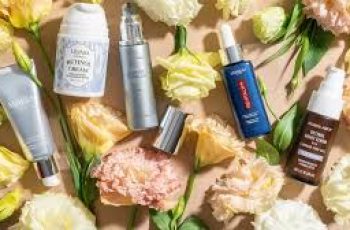
Skin Care Tips to Help Manage Dark Spots
Uneven skin tone and dark spots are common skin concerns for many individuals. Whether caused by sun exposure, hormonal fluctuations, or skin trauma, these spots can be stubborn and tricky to treat. But don’t worry! We have the answers for you. In this guide, we’ll cover everything you need to know about dark spots, how they form, how to treat them, and tips for managing them effectively.
What Are Dark Spots or Hyperpigmentation?
Dark spots, also known as hyperpigmentation, occur when excess melanin (the pigment that gives skin its color) is produced in specific areas of the skin, leading to darker patches.
There are different types of dark spots, and understanding the source is crucial for effective treatment.
1. Solar Lentigo (Sunspots)
Solar lentigo, also referred to as sunspots, liver spots, or age spots, occurs due to prolonged exposure to ultraviolet (UV) rays.
These dark patches develop over time when UV exposure triggers the skin’s melanin production, resulting in uneven pigmentation.
Sunspots typically appear on areas most exposed to the sun, like the face, hands, shoulders, and chest. These spots start small but may grow larger and darker if sun protection isn’t used.
2. Estrogen Fluctuations
Estrogen fluctuations, often due to pregnancy, birth control pills, or hormone replacement therapy, can lead to melasma.
This condition, sometimes called the “mask of pregnancy,” presents as larger, darker patches of pigmentation, particularly on the face.
Unlike sunspots, melasma tends to cover broader areas and is often seen on the forehead, cheeks, and upper lip. The dark patches tend to fade after childbirth or when stopping hormonal treatments. However, it can persist longer without proper care.
3. Post-inflammatory Hyperpigmentation (PIH)
Post-inflammatory hyperpigmentation (PIH) occurs after the skin has been damaged by trauma, such as from picking at pimples, wounds, or other skin conditions.
When the skin heals, melanin production is triggered, leaving behind a stubborn dark spot.
PIH can last for months or even years if left untreated. It’s more common in individuals with darker skin tones, but anyone can develop it if they injure their skin.
How Do I Get Rid of Dark Spots on My Skin?
Managing dark spots requires consistent care and the right treatments. Here are a few effective steps to fade dark spots and achieve an even skin tone.
1. Protect Your Skin with Sunscreen
The most crucial step in treating and preventing dark spots is consistent sun protection. Sunscreen is a must in your daily skincare routine.
UV exposure exacerbates existing dark spots and encourages the development of new ones.
To protect your skin, apply broad-spectrum sunscreen with an SPF of at least 30, and reapply every two hours, especially when spending time outdoors.
Wearing protective clothing, sunglasses, and hats can also shield your skin from harmful rays.
2. Skin Peels (Exfoliation)
Exfoliating is a key component of reducing dark spots. Skin peels, including chemical exfoliants like glycolic acid, help remove dead skin cells and reveal fresher, more even skin underneath.
While professional chemical peels are an excellent option, over-the-counter products with glycolic acid or lactic acid are also effective for at-home use.
These gentle exfoliators can speed up skin cell turnover and help fade hyperpigmentation over time.
3. Use Antioxidants
Antioxidants are powerful allies in the fight against dark spots. These compounds protect the skin from free radicals and environmental stressors, which can worsen pigmentation.
Vitamin C is one of the best antioxidants for brightening dark spots. Not only does it lighten hyperpigmentation, but it also prevents further damage from UV rays and pollution.
Incorporating a vitamin C serum into your morning routine can significantly brighten and even out your complexion.
4. Laser Treatment
For more stubborn sunspots, laser treatments such as Q-switched YAG laser can be highly effective.
This laser treatment targets the dark pigmentation by emitting light that is absorbed by the pigment, breaking it down and causing it to flake off.
While laser treatment works wonders for solar lentigo, it’s not recommended for PIH or melasma, as these forms of pigmentation do not respond well to laser therapy.
Be sure to consult with a dermatologist before considering this treatment.
How to Manage Your Dark Spots?
In addition to fading dark spots, there are ways to make them less noticeable while you treat them, and to prevent new spots from forming.
1. Invest in a Consistent Skincare Routine
A good skincare routine helps prevent dark spots from forming and can also speed up their healing process.
Incorporate ingredients like glycolic acid (AHA) into your routine to exfoliate and improve skin texture.
Consistency is key – over time, these active ingredients will help fade hyperpigmentation and improve overall skin health.
2. Use Color Correcting Makeup
While you’re in the process of fading dark spots, you can use makeup to temporarily reduce their appearance.
Color-correcting concealers work wonders at neutralizing dark spots before applying foundation.
For example, an apricot-colored concealer can counteract the blue or brown tones of dark spots, making them less visible under makeup.
Just be sure to use a foundation that matches your skin tone to blend everything seamlessly.
3. Hydrate Your Skin
Hydrated skin is more resilient and better able to fight off free radicals. Drinking plenty of water and using moisturizers with ingredients like hyaluronic acid will help keep your skin’s barrier intact.
A well-moisturized skin barrier helps protect against further environmental damage that could worsen dark spots.
Additionally, a hydrated complexion looks healthier and more radiant, making any hyperpigmentation less noticeable.
Why Won’t My Dark Spots Fade?
There are several reasons why your dark spots might not be fading as quickly as you’d like. Here are some potential causes:
Not using daily SPF: Sunscreen is vital to prevent dark spots from getting darker and to prevent new ones from forming.
Incorrect treatment: If you haven’t identified the type of dark spot, you might not be using the right treatment.
Sunbed use: Using sunbeds exposes your skin to more UV damage, which can worsen existing pigmentation.
Weak AHA concentration: If your AHA serum isn’t strong enough, it may not be able to effectively exfoliate and remove dark spots.
Picking or squeezing pimples: This aggravates the skin and increases melanin production, leading to more pigmentation.
Not being patient: Treatments for dark spots take time. It may take weeks or months before you see noticeable results.
If you’ve ruled out these issues and still see no improvement, consider speaking with a dermatologist for personalized advice.
Do Dark Spots Go Away on Their Own?
Yes, dark spots can fade over time, but the timeline varies based on the type of pigmentation and the treatment you’re using.
PIH can take up to six months or more to fade on its own.
Melasma often fades after pregnancy or when changing birth control methods.
Sunspots may darken during the warmer months, but with proper treatment and sun protection, they can lighten over time.
Patience and consistency are crucial in managing dark spots, but with the right approach, they will eventually fade.
How to Remove Dark Spots Naturally?
If you prefer natural remedies, there are several at-home treatments you can try. One of our favorite recipes involves a soothing, exfoliating face mask:
At-Home Face Mask for Dark Spots:
Ingredients:
1 tablespoon of full-fat Greek yogurt
1 tablespoon of manuka honey
The juice of one lemon
Directions:
Mix the ingredients in a bowl.
Apply the mask evenly to your face, avoiding the eye area.
Leave it on for 30 minutes, then rinse off with warm water.
Why It Works:
Yogurt contains lactic acid (AHA), which gently exfoliates the skin and brightens dark spots.
Manuka honey has antioxidants that help heal and rejuvenate the skin.
Lemon juice contains citric acid, which is known for its skin-lightening properties.
Using this mask two to three times a week can gradually help reduce the appearance of dark spots and give you a glowing complexion.
Conclusion
Managing dark spots takes time and consistency, but with the right skincare routine and lifestyle habits, you can effectively reduce their appearance.
Protecting your skin from the sun, using effective treatments like AHAs, antioxidants, and possibly laser treatments, as well as staying hydrated, can significantly improve your skin’s appearance over time.
If you’re still struggling with persistent dark spots, don’t hesitate to consult a dermatologist for professional guidance. Your skin will thank you for the care you give it!


